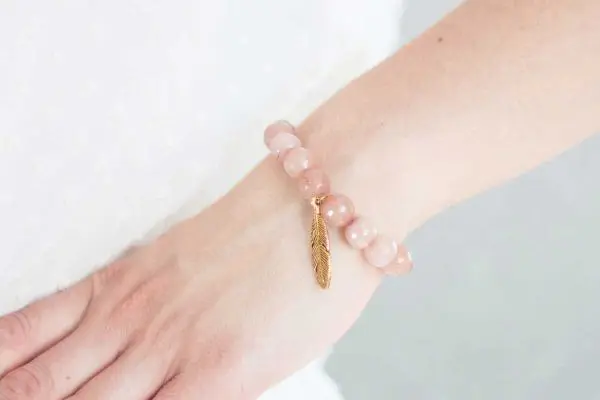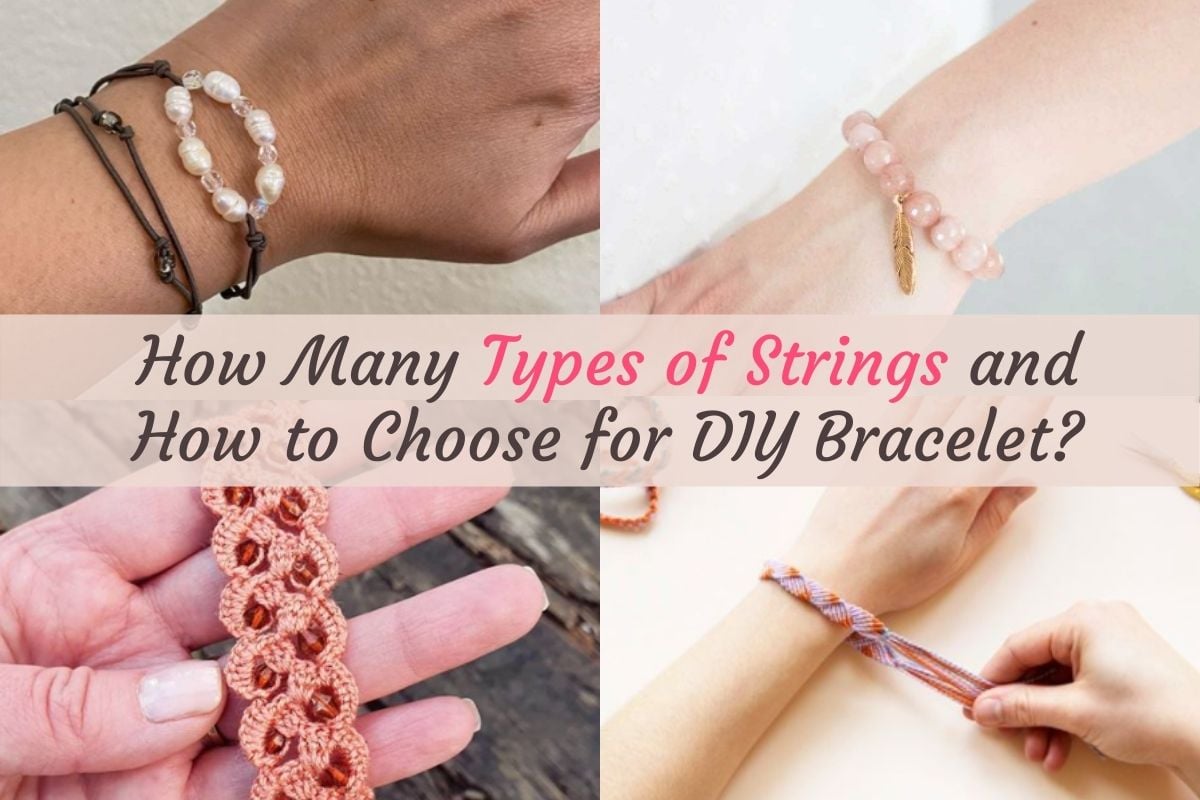DIY bracelets have been in vogue for decades and there are no signs of letting up in recent years. Evidence of this is the abundance of bracelet tutorial videos on YouTube, as well as countless websites dedicated to this easy to learn art. There are different types of strings for DIY bracelet in the market, it is easy to confuse on choosing suitable string for DIY bracelet project. In this post, we’ll talk about common types of strings that may help to choose the right string to make your bracelet project.
Table of Contents
Types of string for DIY bracelets
1.Embroidery floss
View this post on Instagram
View this post on Instagram
View this post on Instagram
The embroidery floss or embroidery thread is a hand-spun thread variant that is made specifically for embroidery work and other kinds of needlework. Manufactured and spun from cotton, embroidery floss has six strands, and you can easily divide or split each individual thread if you want to create three string bracelets.
The biggest advantage of using embroidery floss is it is thin and easy on the hands, making it a joy to work with. The downside is because of the way it was spun and threaded, it has a tendency to fray quite easily, which can be a problem if the bracelet maker is just starting out.
In any case, you will be able to purchase this type of string in skeins or rolls of eight meters or more, so supply of string shouldn’t be a problem.
Take note that not all embroidery flosses are created equal, and each manufacturer has its own pros and cons. You can try to buy from one or two manufacturers and see which is best, so you can start building your knowledge of which brands of string are best for making bracelets.
Find embroidery floss on Amazon |
2.Pearl cotton
Pearl cotton is a type of thread that is manufactured specifically for projects like making DIY bracelets. It comes in three sizes, with three being the thickest and eight being the thinnest.
Pearl cotton is preferred for needlework projects where thread size is an advantage – for example, when you’re making sweaters or bags. This type of thread comes in a twisted form factor, so it’s easy to unravel when you are making bracelets. The thinner variants of pearl cotton are ideal for creating bracelets at home.
View this post on Instagram
Find pearl cotton on Amazon |
3.Craft thread
View this post on Instagram
While craft thread can look the part of pearl cotton and embroidery floss, it is actually the least expensive of the three, and has a propensity to break. This is the general rule when it comes to bracelet threads – as the price goes down, so does the quality, and the durability.
And with bracelets, quality is something that you cannot compromise because you can’t have your bracelets breaking on you while you are wearing them. This type of thread is not ideal for making bracelets of any sort, including friendship bracelets.
Find craft thread on Amazon |
4.Yarn
View this post on Instagram
View this post on Instagram
Yarn is used for a variety of projects, including crocheting, but the quality varies wildly throughout the industry so it would be a good idea to purchase from at least two manufacturers to see which one offers the best durability.
Bracelets are naturally weight-bearing and it’s important for you to be able to use string that won’t break easily. While it’s true that yarn is used for a variety of items, including blankets, on their own the synthetic fibers which are interlocking can be on the low side in terms of durability.
Find Yarn on Amazon |
5.Crochet thread
View this post on Instagram
View this post on Instagram
As the name implies, crochet thread is used mainly for crocheting. This type of thread is manufactured with mercerized cotton and lots of decorative dyes are often added to the material to make it even more attractive when used in DIY projects.
The fine gauge of any textile produced with crocheting thread allows such items to be stiffened with the use of regular cornstarch or similar agents.
When picking crochet thread for your DIY projects, it would be best to select the proper gauge so you get the best results. For bracelet projects, you would do well with crochet threads in the five to eight range. Basically, you wouldn’t want to work with threads that are too thick, for obvious reasons.
Find crochet thread on Amazon |
6.Sewing thread
Sewing threads probably have the most number of varieties to choose from, but they’re not all equal in terms of durability. For making bracelets, we recommend that you stick to sewing threads that are at least double-threaded, or higher.
There are sewing threads that are extra durable and are meant for heavy sewing duties, and these would be the triple-threaded and six-threaded variants. The more threads built into the main thread, the better the durability for long-lasting DIY projects. In the end, this would be all that matters because no matter how pretty the threads are, if they will unravel or break when you begin loading beads on them or what not, then the bracelet project is lost.
Find sewing thread on Amazon |
7.Elastic cords
View this post on Instagram
Elastic cords aren’t exactly threads (not in the strict sense) but they’re excellent for making bracelets because they can lock a bracelet in once worn and you can forget about it after. Eventually however, bracelets are worn out, so you may have to perform replacements every few months if you are attached to a particular bracelet that you have done at home.
Some folks also discourage people from using sewing threads and similar variations because they may not be able to get it right the first time. We think that you shouldn’t be afraid of making mistakes when creating bracelets because those errors are all part of the learning process that we all go through when learning new skills.
If you find yourself picking up beads and re-configuring your DIY bracelets then that is completely fine because your motor skills are still improving. Eventually, folks who like doing bracelets learn like a pro, so again, don’t worry about it.
Find elastic cords on Amazon |
8.Crystal string

Crystal string is perfect for DIY gemstone bead bracelet.
If you like beaded jewelry, stretch elastic crystal string is perfect for bracelet, necklace and other jewelry craft projects making, and for using with gemstone beads or glass beads and weaving with seed beads. Also, Use of crystal string make you easy to wear and take off your beaded bracelet or necklace as it is made of elastic plastic. Be note that when choosing crystal string, high quality is essential as strong stretch elastic crystal string will not break easily.
Furthermore, make sure the thickness of crystal string is wide enough to let beads you choose can pass through. Choose thinner crystal string if you make the bracelet with glass beads or seed beads and get thicker crystal string if you make gemstone beads bracelet.
Find our crystal string |
More articles you may interest:
How To Choose Stretch Cord For Your Bracelet?
How Do You Make Bracelets With String?
What Do Wooden Bead Bracelets Mean?
What are Friendship Bracelets as Special Gifts for Someone?




